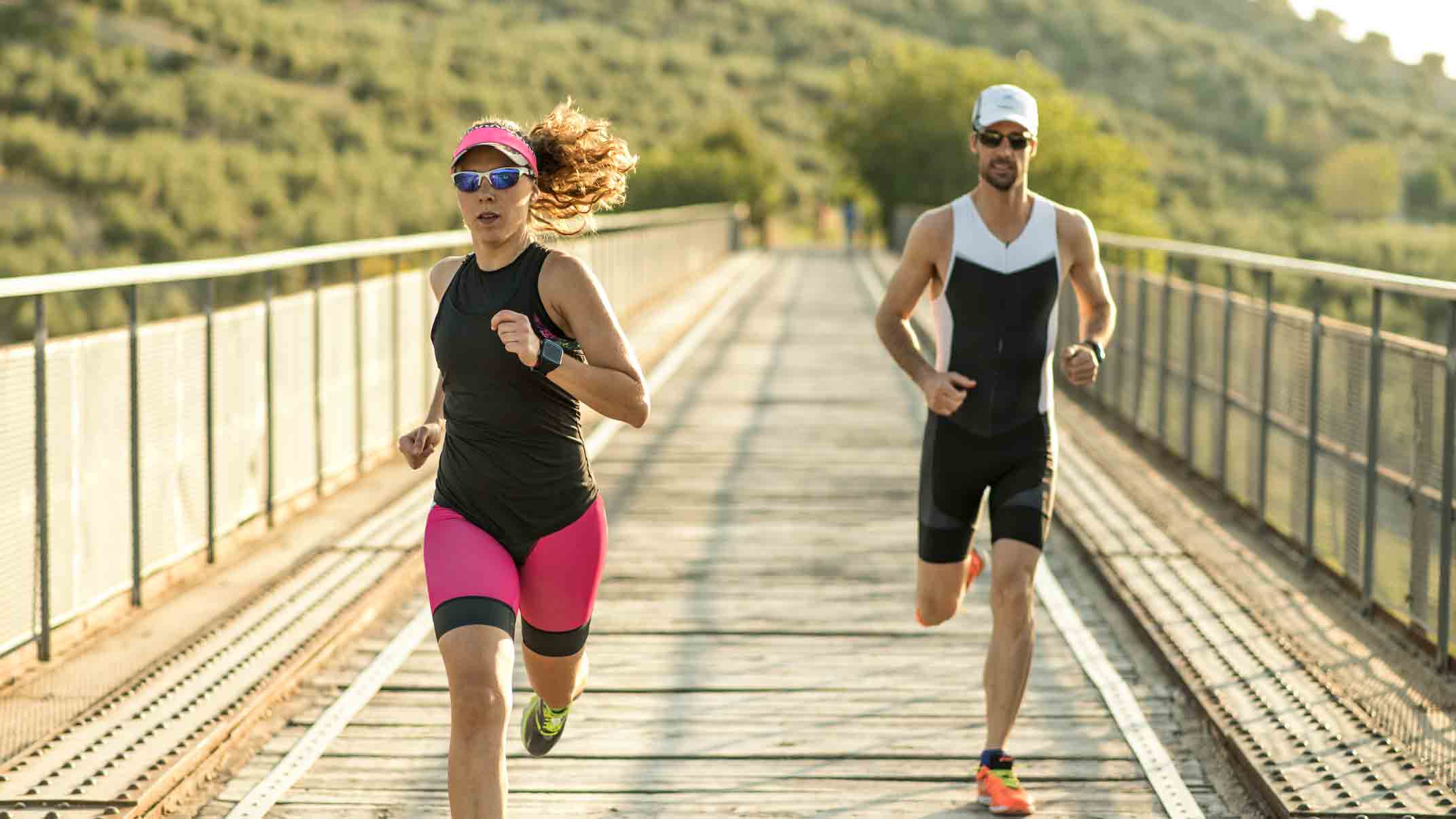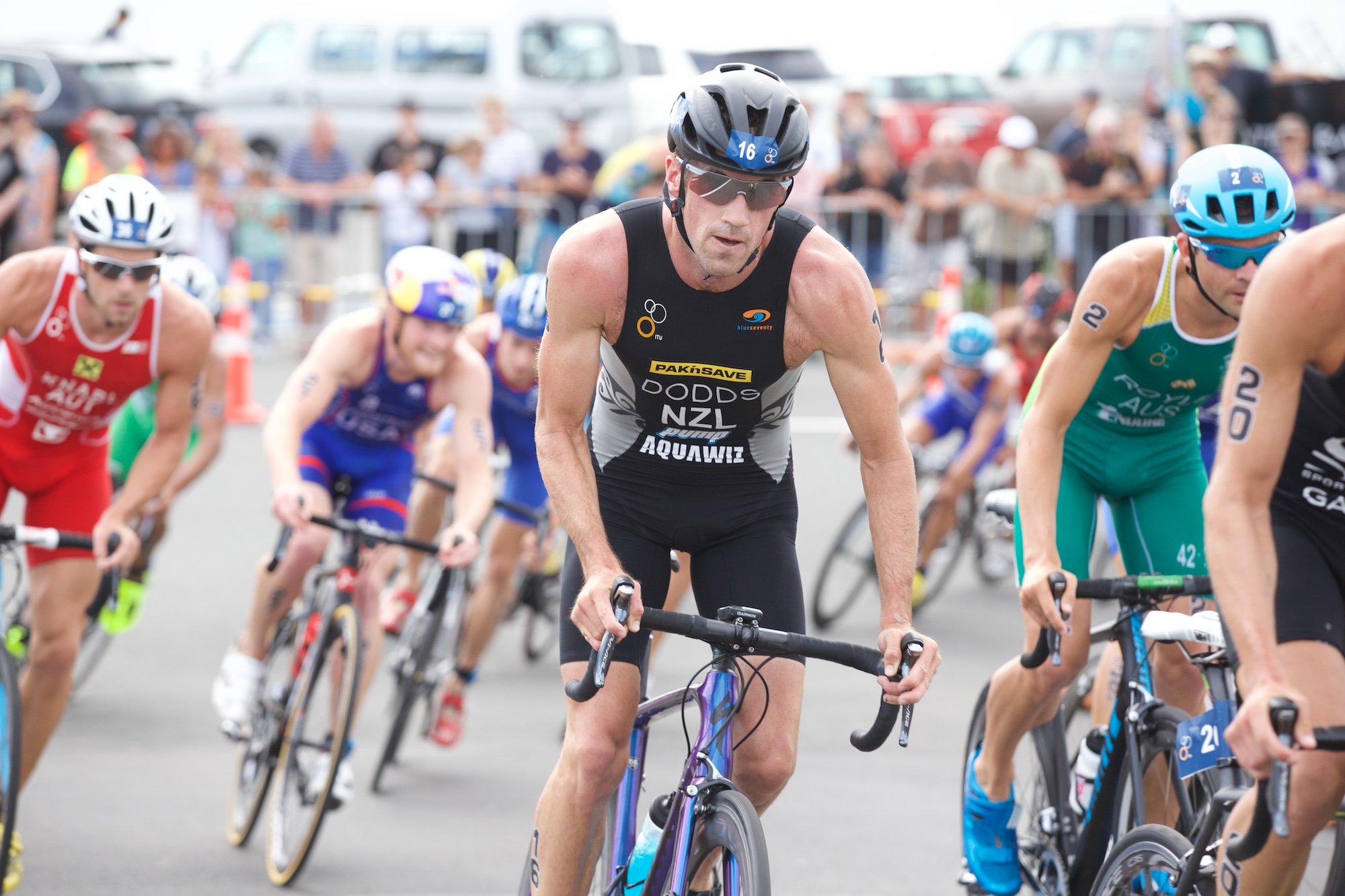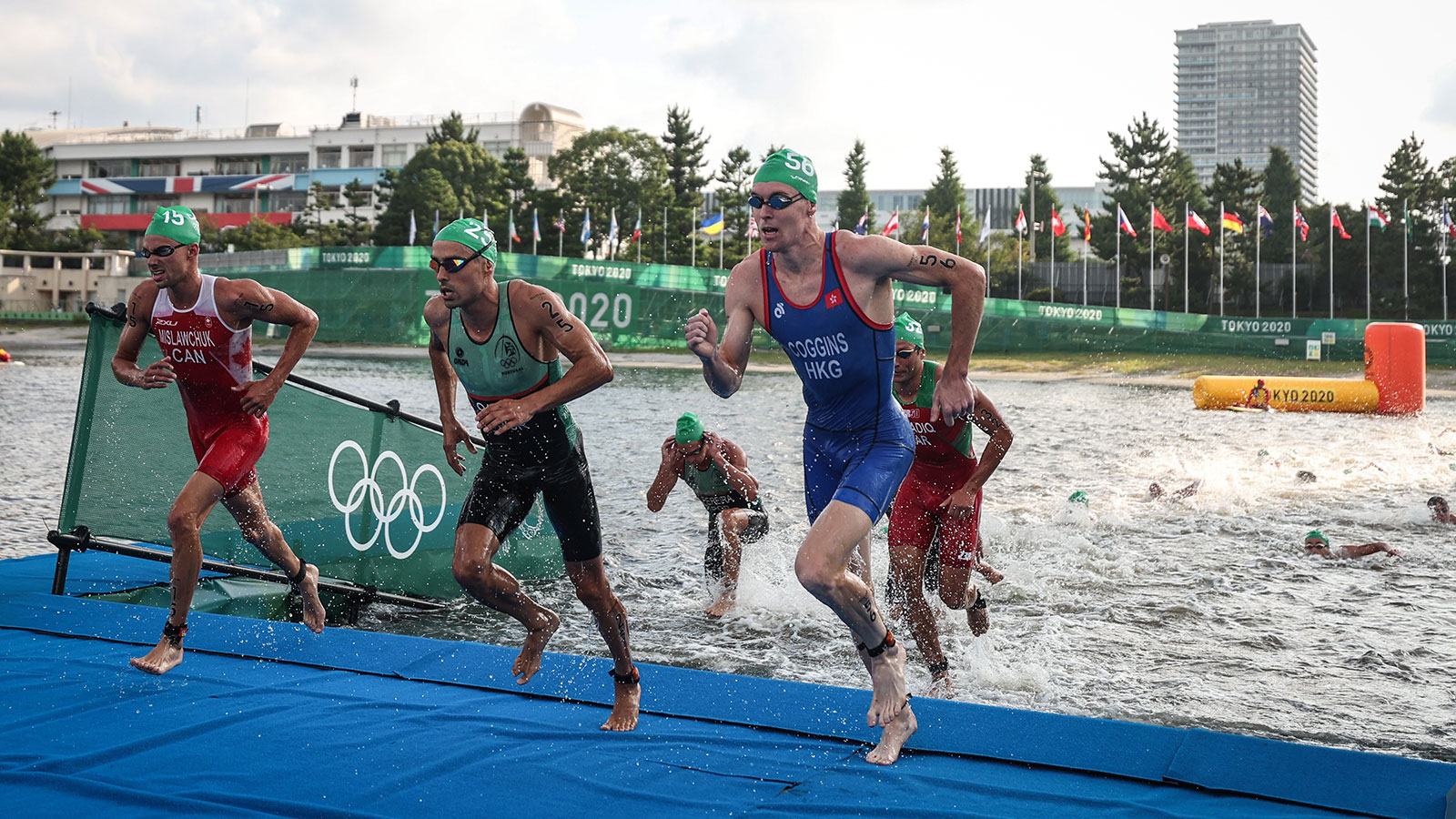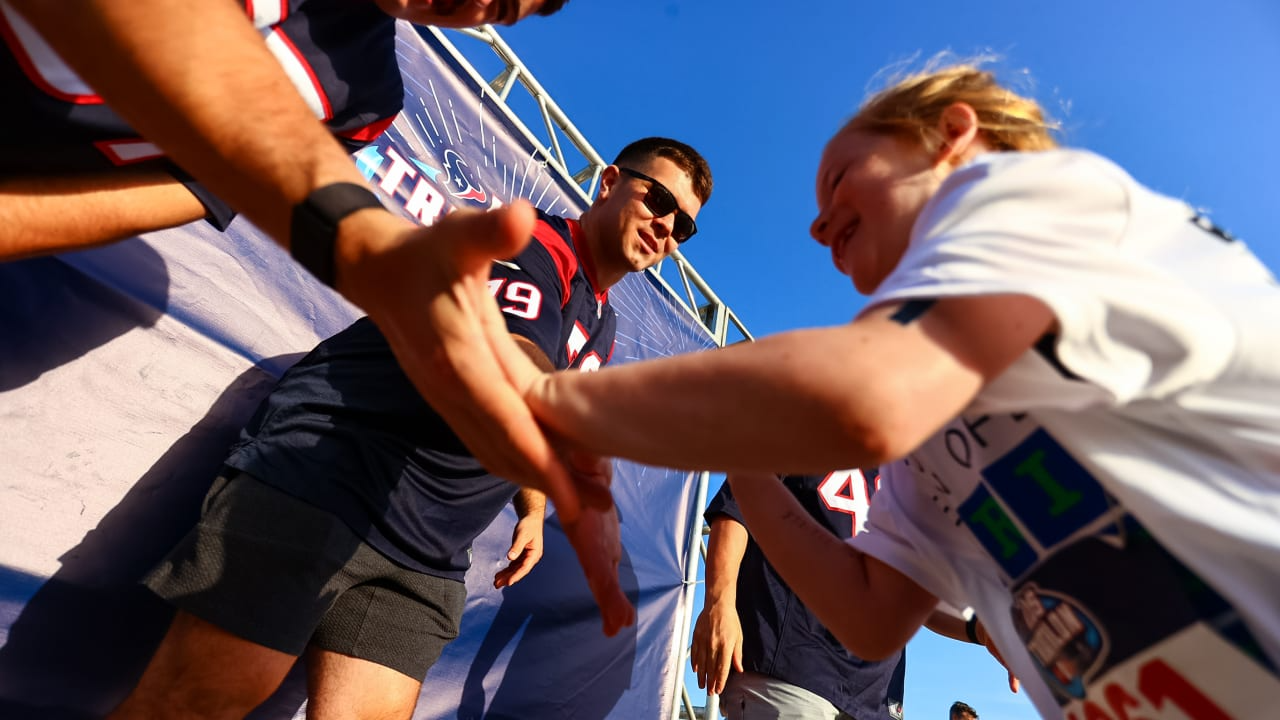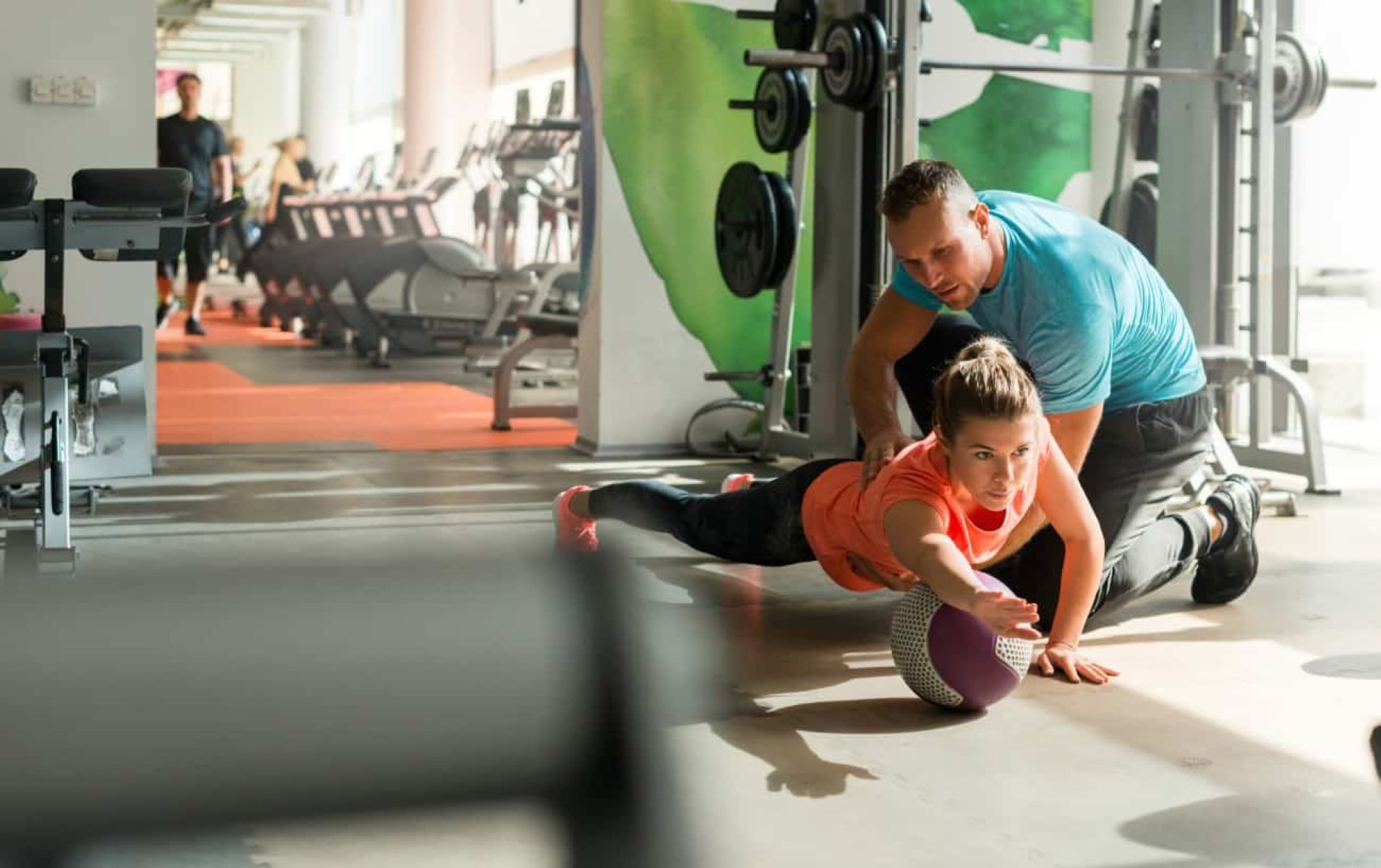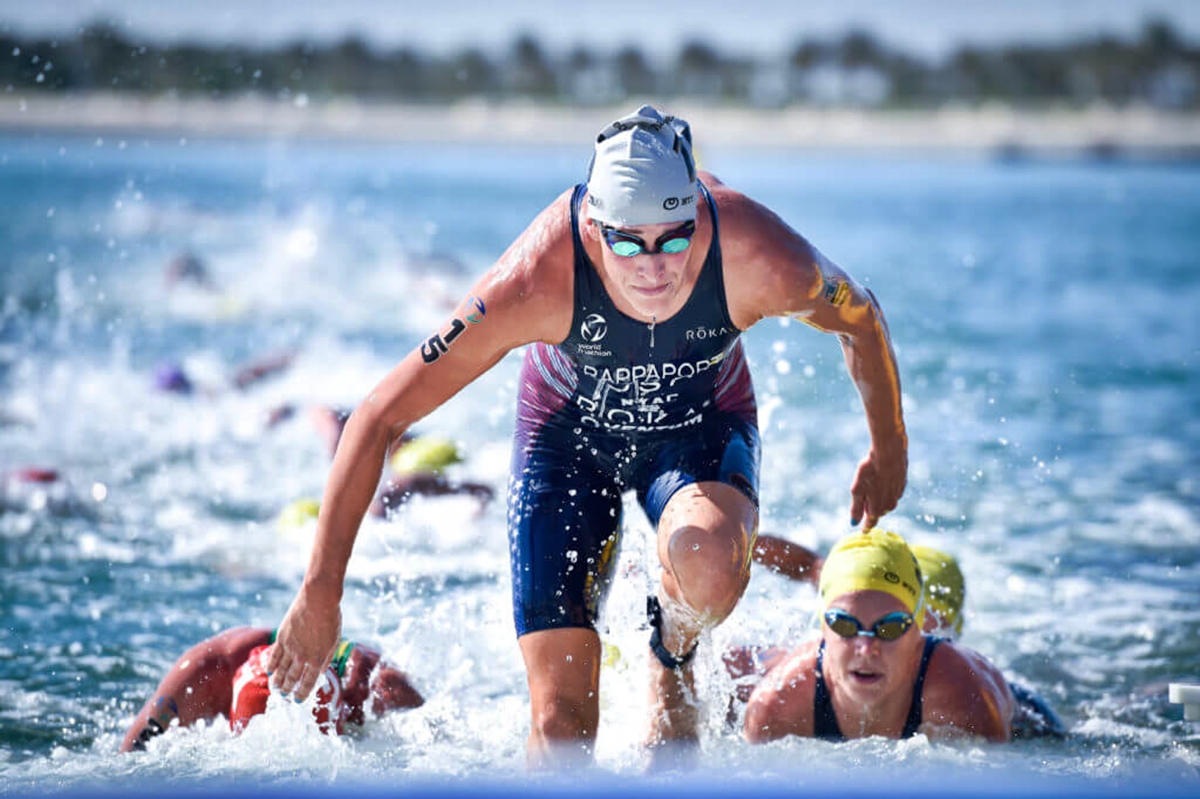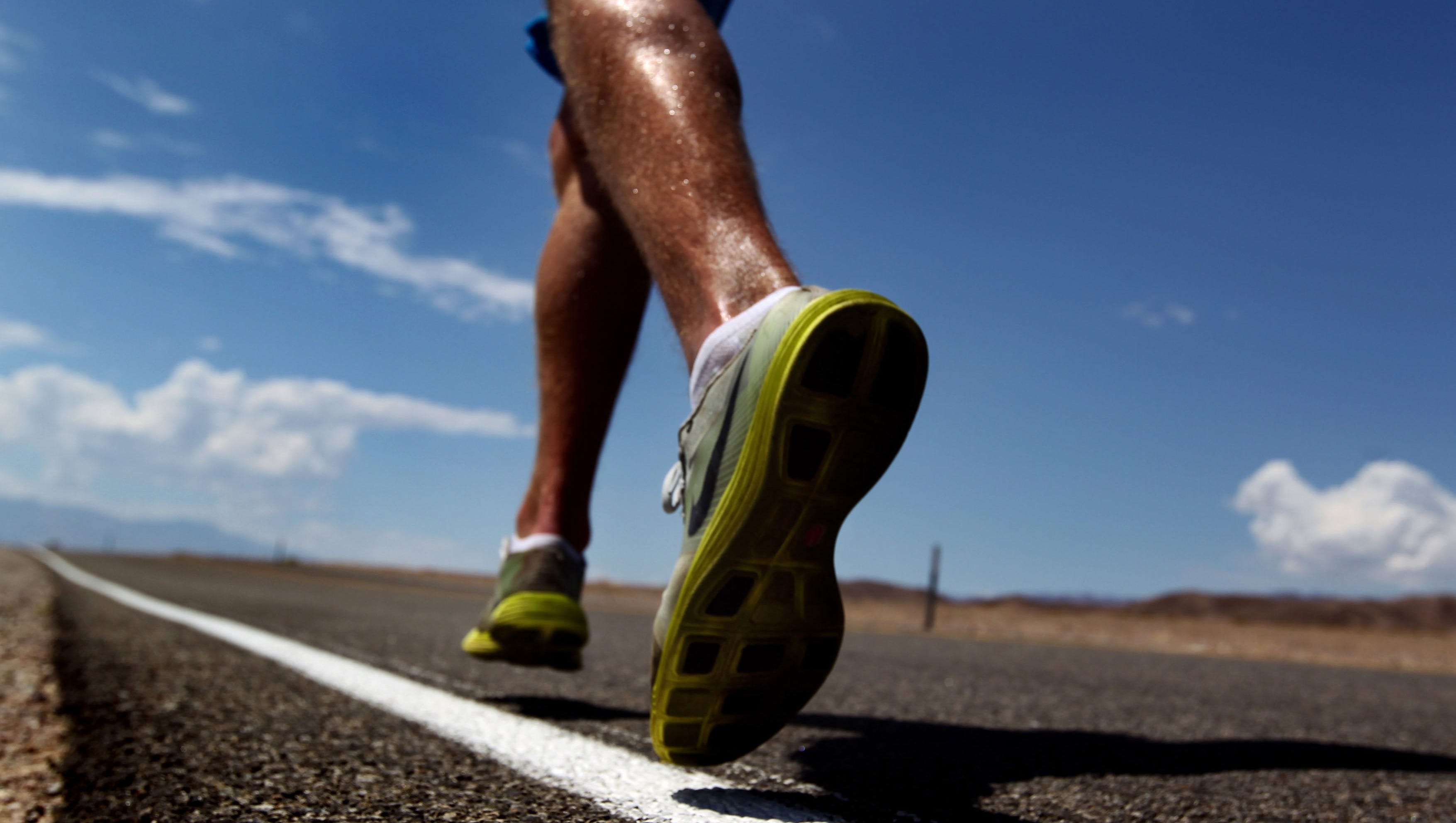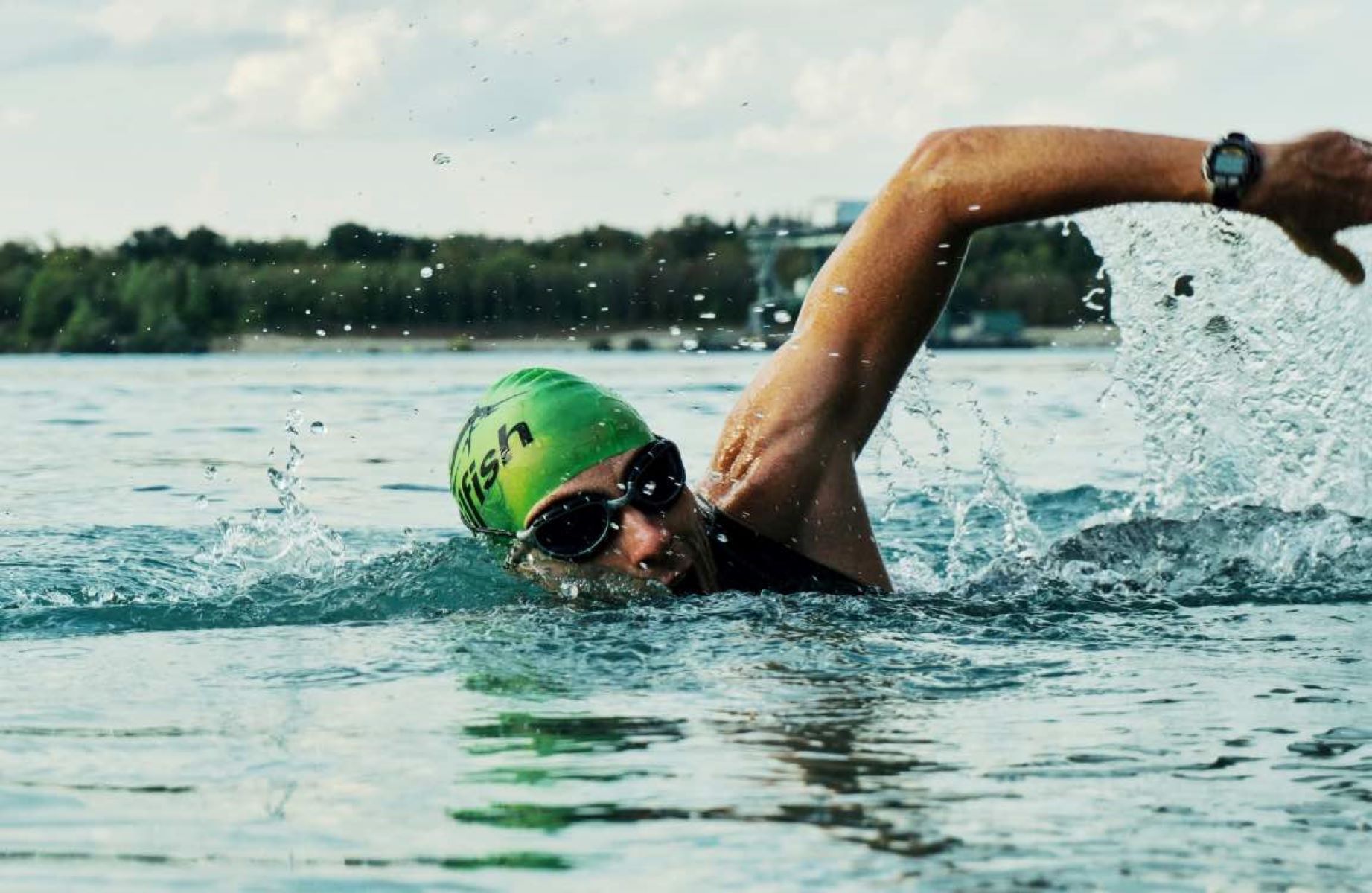

Featured
How To Increase Endurance For Swimming
Modified: March 1, 2024
Learn how to increase your swimming endurance with our featured tips and techniques. Improve your stamina in the water and swim longer distances effortlessly.
Introduction
Welcome to the world of swimming, where speed and technique meet endurance and determination. Whether you are a competitive swimmer or someone who enjoys swimming as a form of exercise, improving your endurance is key to unlocking your full potential in the water. Endurance is the ability to sustain a high level of effort over an extended period of time, and it plays a crucial role in swimming, especially for long-distance events.
Why is endurance so important in swimming? Well, the answer is simple – it allows you to swim longer, faster, and more efficiently. Building your endurance not only enables you to swim longer distances without feeling fatigued but also helps you maintain a consistent pace throughout your swim. It allows you to push through mental and physical barriers, enhancing your overall performance.
Now, you might be wondering how you can improve your endurance for swimming. That’s where this article comes in. We will explore various strategies and techniques to help you increase your endurance in the pool. From understanding the basics of endurance training to incorporating strength and conditioning exercises, we will guide you on your journey to becoming a stronger and more resilient swimmer.
Before we dive into the details, it’s essential to set realistic goals for your endurance improvement. This will help you stay focused and motivated throughout your training. Additionally, proper nutrition, hydration, rest, and recovery are key factors in building endurance. By paying attention to these aspects of your training routine, you can maximize your progress and achieve your desired results.
So, if you’re ready to take your swimming to the next level, let’s jump right in and explore the world of endurance training in swimming!
Importance of Endurance in Swimming
Endurance is a critical component of swimming that significantly impacts a swimmer’s performance. Without adequate endurance, swimmers may struggle to maintain a consistent stroke, experience early fatigue, and be unable to achieve their desired goals. Here are a few reasons why developing endurance is essential in swimming.
Swimming Longer Distances: Endurance is particularly crucial for swimmers aiming to swim long distances, such as in open water swimming or distance events. Long-distance swimming requires the ability to sustain a steady pace over an extended period. The more endurance a swimmer has, the longer they can swim without feeling tired or losing form.
Improving Efficiency: Building endurance helps swimmers become more efficient in the water. When you have good endurance, you can maintain proper stroke technique for longer periods, reducing the risk of injury and improving overall efficiency. This efficiency translates to better performance and faster swimming times.
Racing with Confidence: Endurance training gives swimmers the confidence to compete in races without the fear of running out of energy before the finish line. Increasing stamina allows swimmers to maintain their race pace, stay competitive, and unleash their full potential during crucial moments of a race.
Enhancing Recovery: Developing endurance improves cardiovascular health, which leads to faster recovery times between swims or intense training sessions. With better endurance, swimmers can withstand higher volumes of training without excessive muscle soreness, allowing for more frequent and effective workouts.
Overcoming Mental Barriers: Swimming requires mental strength and the ability to push through physical and mental barriers. By enhancing endurance, swimmers can develop mental resilience and the determination to persevere even when faced with fatigue and challenges during training or competitions.
Enjoyment and Well-being: Swimming is not just about competition; it is also a recreational activity enjoyed by many. Improving endurance makes swimming more enjoyable as you can swim for longer periods without feeling too tired. It also promotes overall fitness and well-being, as swimming is a low-impact exercise that works the entire body.
Developing a Strong Foundation: Endurance training forms the foundation for other aspects of swimming, such as speed and power. Without a solid endurance base, it becomes challenging to build other skills and performance aspects. Therefore, prioritizing endurance will lead to improvements in all areas of swimming.
As you can see, endurance is integral to success in swimming. Whether you are aspiring to become a competitive swimmer, conquer long-distance swimming challenges, or simply improve your overall fitness and enjoyment in the water, focusing on developing endurance will undoubtedly help you achieve your goals.
Understanding the Basics of Endurance Training
Endurance training is a systematic approach to increasing your body’s ability to sustain prolonged physical activity. It involves gradually challenging and pushing your cardiovascular system to adapt and become more efficient over time. In swimming, endurance training plays a vital role in enhancing your stamina and enabling you to swim for longer durations without tiring quickly. Here are the key components of endurance training that you should understand before diving into your training regimen.
Building Aerobic Capacity: Aerobic capacity refers to your body’s ability to use oxygen efficiently during exercise. Endurance training focuses on improving your aerobic capacity by engaging in activities that elevate your heart rate for an extended period. In swimming, this means swimming at a sustainable pace for a long duration to build cardiovascular endurance.
Progressive Overload: The principle of progressive overload is the foundation of endurance training. It involves gradually increasing the intensity, duration, or distance of your training sessions over time. By continually challenging your body with progressively more demanding workouts, you stimulate adaptation and improvement in your endurance.
Frequency and Consistency: Consistency is key in endurance training. Regular training sessions, ideally three to five times per week, are necessary to build and maintain your endurance. By consistently exposing your body to the training stimulus, you allow it to adapt and enhance its capacity to handle prolonged exercise.
Variety in Workouts: While consistency is important, it’s also crucial to vary your training to prevent boredom and plateaus. Incorporating different swim sets, drills, and training techniques keeps your workouts fresh and stimulates different energy systems. This variety challenges your body in different ways, helping to enhance your overall endurance capabilities.
Long Slow Distance (LSD) Training: One effective approach to building endurance in swimming is incorporating long slow distance training sessions into your routine. These sessions involve swimming at a comfortable and sustainable pace for an extended period, gradually increasing the distance as your endurance improves.
Recovery and Rest: Adequate rest and recovery are just as important as the actual training sessions. Your body needs time to repair and adapt to the training stimulus, so make sure to incorporate rest days into your training plan. Additionally, getting enough sleep, eating a balanced diet, and managing stress are essential for optimal recovery and endurance development.
Monitoring Progress: Tracking your progress is a valuable tool in endurance training. Keep a training log to record your workouts, distances, and times. This allows you to monitor improvements over time and make adjustments to your training plan as necessary.
By understanding these basics of endurance training, you are equipped with the knowledge to develop a structured and effective training plan. Remember to start gradually, gradually progress your training volume, and always listen to your body. With consistency, patience, and the right mindset, you will steadily improve your endurance and achieve your swimming goals.
Setting Realistic Goals for Endurance Improvement
When embarking on an endurance training journey, setting realistic goals is crucial for long-term success and motivation. Realistic goals help you stay focused, track your progress, and celebrate your achievements along the way. Here are some tips to help you set achievable goals for improving your endurance in swimming.
Assess Your Current Fitness Level: Before setting goals, it’s important to have a clear understanding of your current fitness level. Assessing your swimming endurance, such as how long you can swim without feeling fatigued or monitoring your lap times, will give you a starting point to work from. This assessment will help you set realistic and attainable goals.
SMART Goals: Utilize the SMART goal-setting framework: Specific, Measurable, Achievable, Relevant, and Time-bound. Specific goals narrow down your focus, measurable goals allow you to track progress, achievable goals are within reach, relevant goals align with your overall objectives, and time-bound goals have a specific timeframe attached.
Long-Term and Short-Term Goals: Break down your goals into both long-term and short-term objectives. Long-term goals could be swimming a certain distance or completing a race, while short-term goals can be weekly or monthly milestones that lead you towards your ultimate objective.
Gradual Progression: Avoid setting unrealistic expectations that could lead to burnout or injury. Instead, focus on gradual progression and incremental improvements. Start with smaller goals and gradually increase the intensity, duration, or distance as you build your endurance over time.
Be Specific and Tangible: Make sure your goals are specific and tangible. Instead of saying, “I want to improve my endurance,” specify how much you want to improve or set a specific distance or time goal. This clarity gives you something concrete to work towards, making it easier to track your progress.
Celebrate Milestones: Along your endurance journey, don’t forget to celebrate your milestones. Recognizing and rewarding your progress along the way can boost motivation and fuel your determination. It could be treating yourself to a new swimming gear or simply acknowledging your hard work and dedication.
Adjust as Needed: Remember that goals are not set in stone. As you progress, your goals may need to be adjusted to reflect your new capabilities. Don’t be afraid to modify your goals and set new targets that align with your current level of fitness and aspirations.
Seek Guidance: If you are new to endurance training or unsure of setting appropriate goals, consider seeking guidance from a swimming coach or trainer. They can help you assess your current abilities, set realistic goals, and create a tailored training plan to improve your endurance effectively.
Setting realistic goals for endurance improvement is the foundation of your training journey. By aligning your goals with your current abilities and incorporating the SMART goal-setting framework, you set yourself up for success. Remember to track your progress, celebrate your achievements, and remain flexible in adjusting your goals as you progress. With a clear vision and determination, you are well on your way to improving your endurance in swimming.
Developing a Consistent Training Routine
A consistent training routine is essential for improving endurance in swimming. By establishing a regular schedule, you create a structured and efficient training plan that maximizes your efforts and helps you progress. Here are some key steps to help you develop a consistent training routine for endurance improvement.
Set Aside Dedicated Training Time: Designate specific time slots in your schedule for swimming training. Consistency is key, so choose times that work best for you and are least likely to be interrupted. This could be early mornings, evenings, or any time that aligns with your daily commitments.
Be Realistic and Flexible: Consider your available time and commitments when setting your training routine. Be realistic about the number of training sessions you can accomplish each week and the duration of each session. Allow for flexibility to adjust your routine based on unexpected circumstances or changes in your schedule.
Mix Up Your Training Sessions: Variety in your training sessions helps prevent boredom and keeps you engaged. Include different types of workouts, such as endurance-based swim sets, interval training, drills, and technique-focused sessions. This variety not only improves your endurance but also enhances other aspects of your swimming performance.
Warm-Up and Cool-Down: Prioritize warm-up and cool-down exercises as part of your training routine. Warm-up prepares your body for the upcoming workout, increases blood circulation, and helps prevent injuries. Cool-down exercises, such as light swimming or stretching, aid in the recovery process and reduce post-workout muscle soreness.
Have a Structured Training Plan: Create a structured training plan that outlines the type of workouts, distances, and intensities for each session. This plan helps you stay focused and ensures that you are progressively challenging your endurance. A training plan can be weekly or monthly, depending on your preference.
Monitor Your Progress: Keep track of your training sessions, distances, and times in a training log. This allows you to monitor your progress over time and provides valuable insights into your endurance improvements. Regularly reviewing your training log helps you identify patterns, track your goals, and make necessary adjustments to your routine.
Accountability and Support: Find a training partner or join a swimming group to add a sense of accountability and support to your routine. Having someone to train with can make the process more enjoyable and motivate you to stay consistent. If joining a group is not possible, consider using swimming apps or online communities for virtual support and motivation.
Listen to Your Body: Pay attention to your body’s signals and adjust your training routine accordingly. If you feel excessively fatigued or experience persistent muscle soreness, it may be a sign that you need more rest or a lighter training session. It’s important to find the right balance between pushing your limits and allowing for adequate recovery.
Developing a consistent training routine is the key to improving endurance in swimming. By setting aside dedicated training time, incorporating variety, having a structured plan, and monitoring your progress, you establish the framework for consistent progress. Remember to stay flexible, listen to your body, and seek support when needed. With dedication and consistency, you will witness significant improvements in your swimming endurance.
Incorporating Interval Training for Endurance
Interval training is a highly effective method to enhance your endurance in swimming. This training technique involves alternating periods of high-intensity effort with periods of active recovery. By incorporating interval training into your routine, you can push your body to its limits, improve cardiovascular fitness, and build endurance. Here’s how you can incorporate interval training to boost your swimming endurance.
1. Determine Your Intervals: Begin by determining the duration and intensity of your intervals. Intervals can vary depending on your fitness level and training goals. For example, you can start with shorter intervals of 25 or 50 meters/yards and gradually increase the distance as you progress. Aim to swim at a challenging pace that pushes you outside your comfort zone.
2. Choose the Right Interval Ratio: The ratio between work and recovery intervals plays a significant role in interval training. The most common ratio is 1:1, where the work and recovery intervals are equal in duration. However, you can vary the ratio based on your training goals. For example, 1:2 or 1:3 ratios provide longer recovery periods, allowing you to swim at a higher intensity during the work intervals.
3. Incorporate Different Interval Sets: Mix up your interval sets to keep your training challenging and interesting. You can try ladder sets, where the distance and intensity of each interval progressively increase and then decrease. Another option is descending sets, where the intervals become shorter but more intense as you progress. Experiment to find sets that suit your training needs and keep you motivated.
4. Focus on Technique: While interval training is intense, it’s important to maintain proper technique throughout. Poor technique can lead to inefficiency and potential injury. Concentrate on maintaining good body position, engaging your core, and executing your strokes with precision, even when pushing yourself during high-intensity intervals.
5. Monitor and Record Your Intervals: Keep track of your interval times and distances to monitor your progress over time. This will help you gauge your improvement and set new goals for your endurance training. Record your interval times in a training log or use swimming apps that can track and analyze your performance.
6. Gradually Increase Intensity and Volume: As you build your endurance, gradually increase the intensity and volume of your interval training. This can be achieved by decreasing your recovery periods or increasing the distance or intensity of your work intervals. It’s essential to progress at a pace that suits your fitness level and allows for proper recovery.
7. Rest and Recovery: Proper rest and recovery are vital when incorporating interval training into your routine. Intervals are demanding on the body, and sufficient recovery time ensures that you adapt and avoid burnout. Listen to your body, take rest days as needed, and consider incorporating active recovery activities like gentle swimming or stretching.
8. Seek Professional Guidance: If you are new to interval training or want to optimize your workout, consider seeking guidance from a swimming coach or trainer. They can provide personalized interval training plans based on your goals and help you fine-tune your technique and performance.
Incorporating interval training into your swimming routine is an effective way to improve endurance. By pushing your limits with high-intensity intervals and allowing for proper recovery, you can challenge your cardiovascular system, build stamina, and take your swimming endurance to new heights.
Enhancing Endurance through Strength and Conditioning Exercises
While swimming is primarily an aerobic activity, incorporating strength and conditioning exercises into your training routine can significantly enhance your endurance. These exercises target key muscle groups, improve overall body strength, and help prevent injuries. Here’s how you can enhance your swimming endurance through strength and conditioning exercises.
1. Core Exercises: A strong core is crucial for maintaining proper body alignment and efficient swimming technique. Incorporate exercises such as planks, Russian twists, and flutter kicks to strengthen your core muscles. A strong core provides stability, allowing you to swim longer without muscular fatigue.
2. Upper Body Strength: Strengthening your upper body muscles is essential for generating power and maintaining a strong, consistent swim stroke. Include exercises like pull-ups, push-ups, and dumbbell rows to target your back, chest, shoulders, and arms. Building upper body strength improves your stroke efficiency and allows for sustained propulsion during longer swims.
3. Leg Exercises: Strong leg muscles provide the necessary propulsion and help maintain an efficient kicking motion in swimming. Incorporate exercises such as squats, lunges, and leg presses to target your quadriceps, hamstrings, and glutes. Strong legs improve your kicking power and overall endurance in the water.
4. Interval Training with Strength Exercises: Combine interval swimming sets with strength exercises to simulate the muscular demands of long-distance swimming. For example, alternate between swimming intervals and performing bodyweight exercises like burpees, squat jumps, or mountain climbers. This combination enhances both cardiovascular endurance and muscular strength.
5. Functional Training: Incorporate functional exercises that mimic swimming movements and engage multiple muscle groups simultaneously. Exercises like medicine ball rotations, cable pulls, and TRX rows improve overall body coordination, stability, and endurance. Functional training enhances the transfer of strength and power from the gym to the pool.
6. Flexibility and Mobility Training: Endurance swimming requires a wide range of motion in the shoulders, hips, and spine. Add stretching exercises and mobility drills, focusing on areas prone to stiffness, such as the shoulders, hips, and thoracic spine. Improved flexibility and mobility contribute to smoother and more efficient swimming strokes.
7. Circuit Training: Incorporate circuit training sessions into your routine to improve muscular endurance and aerobic capacity simultaneously. Set up stations with a variety of strength exercises, performing each exercise for a certain amount of time or number of repetitions before moving to the next. Circuit training challenges your cardiovascular system while building muscular endurance.
8. Recovery and Adaptation: Allow time for proper recovery and adaptation after strength and conditioning sessions. Adequate rest, nutrition, and sleep are essential for your muscles to repair and grow stronger. Balancing workouts with recovery allows your body to adapt to the training stimulus and improve overall endurance.
9. Seek Professional Guidance: If you’re new to strength and conditioning exercises or want to optimize your training, seek guidance from a certified strength and conditioning coach or personal trainer with experience in swimming. They can provide tailored exercises and advice to suit your specific goals and needs.
By incorporating strength and conditioning exercises into your training routine, you can improve your swimming endurance, enhance overall body strength, and prevent muscular imbalances. Building a strong and efficient body through targeted exercises complements your swim training and takes your endurance swimming to new levels.
Proper Nutrition and Hydration for Improved Endurance
Proper nutrition and hydration play a vital role in improving endurance for swimming. Fueling your body with the right nutrients and staying adequately hydrated can optimize your performance, support muscle recovery, and enhance your overall swimming endurance. Here are some guidelines to follow for proper nutrition and hydration:
1. Stay Hydrated: Proper hydration is essential for optimal performance. Dehydration can lead to fatigue, muscle cramps, and decreased endurance. Drink water regularly throughout the day and ensure you are adequately hydrated before, during, and after your swimming sessions. The general recommendation is to aim for at least 8 to 10 cups (64-80 ounces) of water per day.
2. Electrolyte Balance: Electrolytes such as sodium, potassium, and magnesium are crucial for maintaining proper fluid balance and muscle function. When you sweat during intense swimming workouts, electrolytes are lost. Consume foods rich in electrolytes or consider sports drinks that replenish these important minerals.
3. Balance Your Macronutrients: Fuel your body with a balanced combination of carbohydrates, protein, and healthy fats. Carbohydrates provide the primary energy source for endurance activities, so prioritize complex carbohydrates like whole grains, fruits, and vegetables. Protein supports muscle repair and recovery, so include lean sources such as chicken, fish, tofu, or legumes. Healthy fats from sources like avocados, nuts, and olive oil provide long-lasting energy and support overall health.
4. Timing and Pre-Workout Meals: Eat a well-balanced meal/snack 2-3 hours before your swimming session to fuel your body with the necessary energy. Include carbohydrates for sustained energy and some protein for muscle repair. If you’re swimming early in the morning or can’t have a full meal, opt for a light, easily digestible snack like a banana or yogurt about 30 minutes before swimming.
5. Post-Workout Recovery: Properly refuel your body after swimming sessions to aid in muscle recovery and replenish energy stores. Aim to consume a snack or meal within 30-60 minutes after swimming that includes carbohydrates and protein. This promotes optimal recovery and sets you up for your next training session.
6. Nutrient-Dense Foods: Focus on nutrient-dense foods that provide essential vitamins, minerals, and antioxidants. Incorporate a wide variety of fruits, vegetables, whole grains, lean proteins, and healthy fats into your meals. These foods provide necessary nutrients to support endurance, recovery, and overall health.
7. Avoid Excessive Caffeine and Alcohol: While a moderate amount of caffeine can provide a performance boost, excessive consumption can lead to dehydration and disrupt sleep patterns. Similarly, alcohol can dehydrate the body and impair recovery processes. Limit caffeine and alcohol intake, especially close to your swimming sessions.
8. Listen to Your Body: Everyone’s nutritional needs and tolerances differ, so pay attention to how your body responds to different foods and timing strategies. Experiment and find what works best for you and your swimming goals. Consulting with a registered dietitian can provide personalized guidance based on your specific needs and requirements.
Proper nutrition and hydration are essential for improving endurance in swimming. By fueling your body with the right nutrients, maintaining hydration, and supporting recovery, you can optimize your performance and enhance your swimming endurance.
Rest and Recovery: Essential for Building Endurance
Rest and recovery are crucial components of any training regimen, especially when it comes to building endurance in swimming. While it may seem counterintuitive, allowing your body proper rest and recovery time is essential for improving performance and building endurance. Here are the key reasons why rest and recovery are vital for building endurance:
Muscle Repair and Growth: Endurance training places significant stress on your muscles. During rest and recovery periods, your body repairs damaged muscle fibers and builds new ones, leading to increased strength and endurance. Without proper rest, your muscles may become fatigued and prone to injury, hindering your endurance progress.
Energy Replenishment: During intense training, your body depletes its energy stores, such as glycogen, which is vital for endurance activities. Rest and recovery allow your body to replenish these energy stores, ensuring you have enough fuel to perform at your best during subsequent training sessions. Adequate energy levels are crucial for sustaining endurance efforts over extended periods.
Optimal Hormonal Balance: Intense exercise temporarily disrupts hormonal balance in your body. Adequate rest helps restore hormonal balance, ensuring your body functions optimally. Hormones such as cortisol, which increases during exercise, can impair recovery and hinder endurance progress if not properly regulated through rest and recovery.
Injury Prevention: Overtraining and inadequate rest increase the risk of injuries, including muscle strains, stress fractures, and joint issues. Rest allows your body time to heal and strengthen, reducing the likelihood of injuries. It also gives you an opportunity to address any minor aches or pains early on, preventing them from escalating into more serious issues in the future.
Mental Refreshment: Endurance training not only pushes your body but also challenges your mental stamina. Rest and recovery not only rejuvenate your body but also provide time for mental recuperation. It helps prevent mental burnout and allows you to approach subsequent training sessions with renewed focus and motivation, crucial for building endurance.
Quality Sleep: Rest and recovery go hand in hand with quality sleep. Sleep is a vital component of the recovery process as it allows your body to repair and regenerate. During deep sleep, growth hormone is released, playing a crucial role in muscle repair and overall recovery. Aim for 7-9 hours of quality sleep each night to support your endurance training endeavors.
Active Recovery: Rest doesn’t always mean complete inactivity. Active recovery, such as gentle swimming, light stretching, or foam rolling, can aid in flushing out metabolic waste, reducing muscle soreness, and promoting blood flow to support recovery. Incorporating active recovery sessions into your routine can enhance overall endurance training progress.
Individualized Rest Periods: Every individual is unique, and the required rest period may vary. Factors such as age, fitness level, overall health, and training intensity all influence the necessary rest and recovery time. Listen to your body’s signals and adjust your training accordingly. Incorporate regular rest days and deload weeks to allow your body ample time to recover and adapt.
Remember, building endurance is a gradual process that requires a balance between challenging workouts and adequate rest and recovery. By prioritizing rest, you provide your body with the opportunity to repair, adapt, and ultimately build the endurance necessary for swimming success.
Tracking and Monitoring Your Endurance Progress
Tracking and monitoring your endurance progress is essential to evaluate your training effectiveness, identify areas for improvement, and stay motivated on your journey. By keeping a record of your workouts, measuring key performance indicators, and tracking your progress, you can make informed adjustments to your training plan. Here are some strategies to effectively track and monitor your endurance progress:
Keep a Training Log: Maintain a training log or use fitness apps to record your workouts, including distances, times, and any relevant notes. This log serves as a valuable resource to track your progress over time and identify trends in your endurance training. Reviewing your log helps you see how far you’ve come and provides motivation to keep pushing forward.
Set Benchmarks and Goals: Establish benchmark tests that you can repeat at set intervals to gauge your endurance progress. This could be swimming a specific distance for time, completing a certain number of intervals, or monitoring your heart rate during specific workouts. Set realistic and measurable goals based on these benchmarks to continuously strive for improvement.
Record Key Performance Indicators: Track key performance indicators (KPIs) that are indicative of your endurance progress. These could include lap times, heart rate zones, distance covered in a set time, or stroke efficiency metrics. Monitoring these KPIs enables you to assess changes in your performance and make adjustments to your training plan accordingly.
Use Wearable Technology: Utilize wearable technology, such as swimming trackers or heart rate monitors, to gather accurate data on your swimming sessions. These devices provide real-time feedback on metrics like distance, pace, stroke count, and heart rate. Analyzing this data helps you identify patterns, measure progress, and make data-driven training decisions.
Assess Rate of Perceived Exertion (RPE): Rate your perceived exertion on a scale from 1 to 10 after each training session. This subjective measure allows you to understand how hard you felt you worked during each swim. Tracking RPE can provide insight into the effectiveness of your workouts and ensure that you are pushing yourself appropriately.
Measure Recovery Time: Monitor your recovery time after intense swim workouts. Note how long it takes for your heart rate to return to a resting state and for any muscle soreness to subside. This information helps you gauge your recovery capacity and adjust your training volume or intensity accordingly.
Periodic Fitness Testing: Incorporate periodic fitness tests to assess your overall fitness level and specific endurance capacity. These can include a timed swim test, a submaximal or maximal swim test, or a VO2 max test. Regular fitness testing provides objective data on your progress and helps you set appropriate training targets.
Seek feedback from a Coach: Consider working with a swimming coach who can provide professional guidance and objective feedback on your endurance progress. They can analyze your training log, KPIs, and performance data to identify areas for improvement, suggest modifications to your training plan, and help you stay on track towards your goals.
Remember, tracking and monitoring your endurance progress is not only about the numbers but also the qualitative aspects of your training. Pay attention to how you feel during and after each workout, take note of any improvements in technique, and celebrate small victories along the way. By consistently tracking and monitoring your endurance progress, you can stay motivated, make informed training decisions, and continue to push yourself toward greater swimming accomplishments.
Conclusion
Improving endurance for swimming requires dedication, consistency, and a well-rounded approach to training. By understanding the importance of endurance, setting realistic goals, and incorporating various strategies, you can enhance your swimming abilities and unlock your full potential in the water.
Endurance training involves gradually challenging your cardiovascular system, building aerobic capacity, and pushing the limits of your stamina. It is essential to develop a consistent training routine, incorporating diverse workouts, interval training, and strength and conditioning exercises. Prioritizing proper nutrition, hydration, rest, and recovery supports your endurance development and overall well-being.
Tracking and monitoring your progress allows you to evaluate your training effectiveness, identify areas for improvement, and stay motivated on your journey. By setting benchmarks, recording key performance indicators, and utilizing technology, you gain valuable insights into your endurance progress and make data-driven training decisions.
Remember to listen to your body, adjust your training plan as needed, and seek professional guidance when necessary. Improvement takes time, and building endurance is a gradual process. Stay patient, remain consistent, and celebrate each milestone along the way.
So, dive in, embrace the challenge, and watch as your swimming endurance reaches new heights. With determination, perseverance, and the strategies outlined in this article, you are well-equipped to become a stronger, more resilient swimmer. Enjoy your journey to increased endurance and the countless rewards that come with it.
